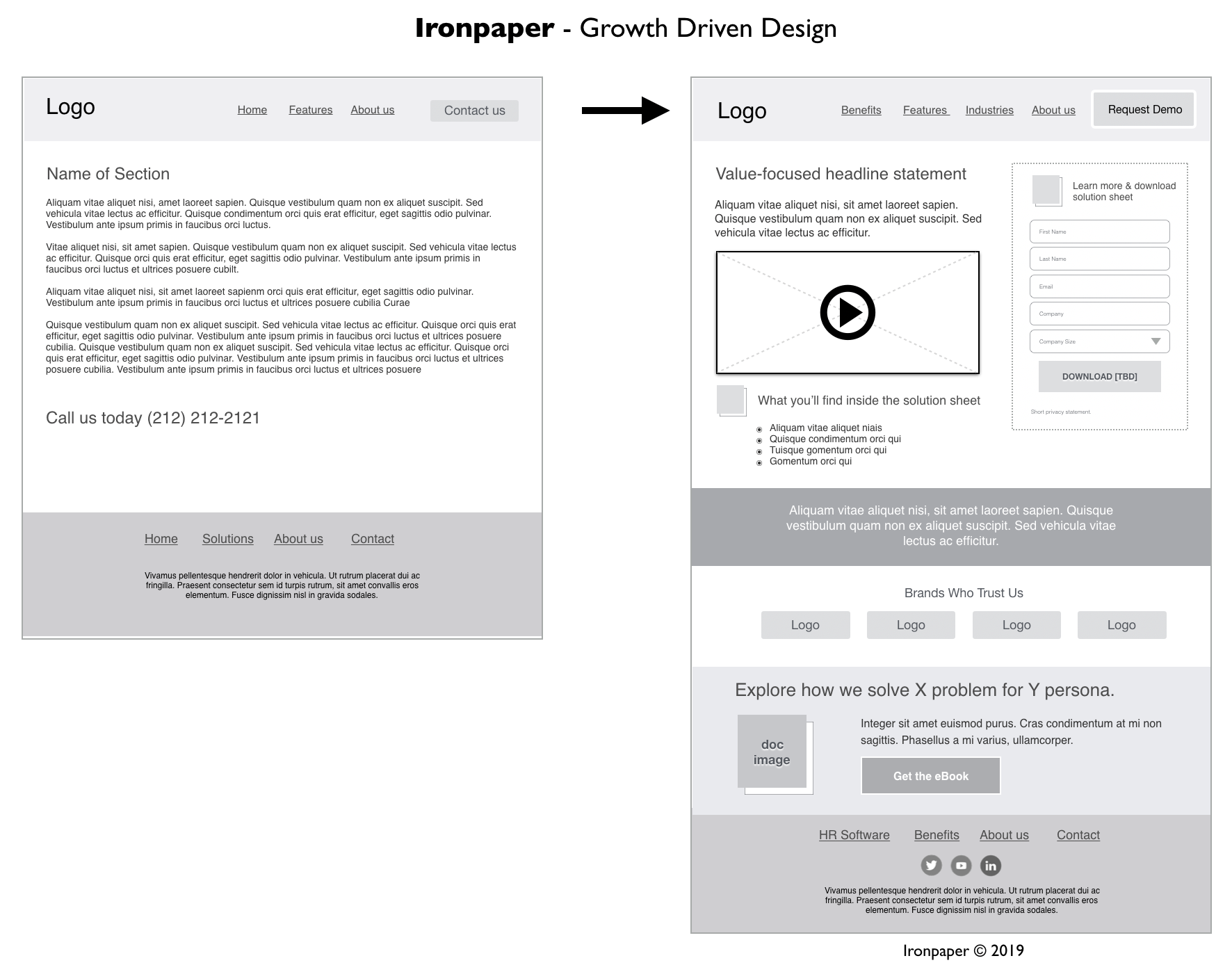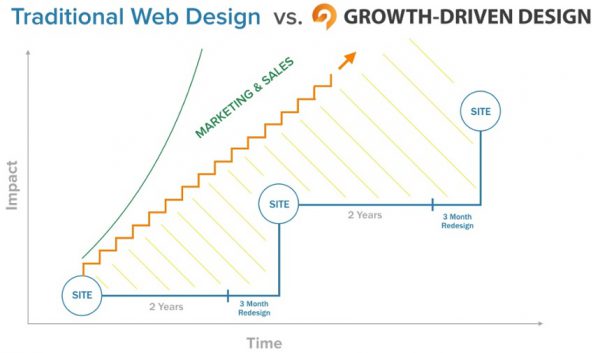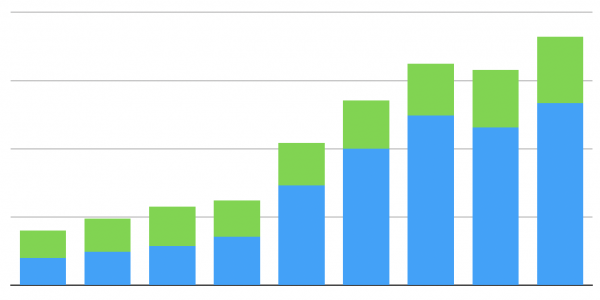
B2B Articles - January 23, 2019
Agile projects are three times more likely to succeed than projects managed with traditional methods. –Vitality Chicago
Agile website design is the method of launching a lean version of your company’s website, then making software and content improvements over time. Instead of one big launch that lasts you a few years, you’re making many optimizations as you work continually on your performance. This is the way B2B is confidently heading, with more companies than ever trying an agile approach.

Some benefits of agile website design include:
Read on for reasons to ditch the old model of website design and begin transitioning your company to an agile approach.
With traditional website design, you have one big launch. During this time many stakeholders usually get involved, and you go through many rounds of revisions. This can take plenty of time before everyone is “on board.” And there is a big emphasis on the “final product.” This need for perfection and permanence slows your speed-to-market and ramps up your costs, too.
With agile website design, you don’t worry about publishing a finished product. You know your website will keep evolving and changing for the better over time. Problems are fixed, and new tests are launched, as they arise after launch. This gets you to market more quickly, so you can keep up with competitors.
By launching faster with a stripped-down, beta version of your website, you reach your market more quickly. With this extra time, you can gain many valuable insights. You’ll probably start seeing traffic come to your website and you may already start generating leads, too. By measuring the data and analyzing your new lead pool, you’ll assess how well your site is doing.
You’ll be able to answer these questions months earlier:
With these questions answered, you can more quickly and confidently report on progress. And you can more make decisions to continue improving and meeting your KPIs.
A traditional website is a big investment — often tens of thousands of dollars — to strategize, write new copy, optimize, design, and develop and new site. There is often some branding involved too, and plenty of bugs to fix in the quality assurance (QA) process. But with agile, you launch a lean version of your website and expect to fix and improve it over time. So instead of one up-front cost, you are paying a manageable amount month-to-month.
You’re also getting more value because you’re collecting data instead of simply planning. By reducing the big regular redesign costs, you free up monthly budget to create valuable lead generation assets: like content, blog posts, and paid marketing campaigns.
You could also be spending this money on a better hosting system with built-in analytics like the HubSpot CMS. Since you launch lean, you give your team more time to learn the ropes of the new tool, so you can use it more effectively — earning you more value as well.

As a result of spreading your investment out over time, you lower your risk on a website investment. With traditional website design, you have no idea how your new website will perform. You’re basically taking a big risk on a whole new strategy. If you spend all the money, time, and staff resources creating your new site, there’s still the risk that it won’t perform as expected.
At Ironpaper we’ve seen websites tank their results with this strategy in a short amount of time. And what’s worse, then they’re stuck with those results until they can afford another redesign. With agile, you lower your risk to almost zero. Once you launch, you expect to make tweaks and data-driven optimizations as you learn more about your website design performance, your content, and your industry/audience. While you may see your analytics fluctuate month-to-month as you try new things, you will see a steady growth curve over time.
With agile your website KPIs have a chance to grow because you are continually improving. You have an active handle on your website’s performance.
You are running tests and making small, iterative changes like:
These changes lead to growth in your major KPIs, like your ability to convert website visitors into business leads. Depending on your strategic focus, you can use the data outcomes to grow your website traffic, convert more leads, and nurture leads through your funnel.
By launching lean and using the agile methodology for your website design, you gain analytics constantly. If you keep a record of this data with software (Google Analytics, Hotjar, and HubSpot for example) over time you will see best practices emerge for your company. These will inform every change you make so you’re more informed for every new test you launch.

When you develop a “playbook” of sorts with your website analytics, you can use this everywhere in your digital ecosystem. You can use messaging insights to launch advertisements and structure your audiences based on the things you learn about your visitors. You can draw conclusions about which of your products have the most traction and you can position yourself better for trade shows, advertising, and sales meetings.
Agile marketing is great for your wallet, and it speeds up the time it takes to get in front of your audience. You’ll modernize more quickly. But most importantly, you gain insights that you can scale across new channels and use to meet KPIs reliably over time.
Reference source: Vitality Chicago, “Standish Group Chaos Study” 2018
Tel 212-993-7809
Ironpaper ®
10 East 33rd Street
6th Floor
New York, NY 10016
Map
First-party data marketing
SEO for B2B
Customer journey strategy
ABM Agency
Marketing for IoT Companies
HubSpot Implementation
B2B Product Marketing
Measurable Marketing
IoT go-to-market strategy
IT Marketing
HubSpot for ABM
Go to market strategy
Technology Marketing
Marketing for IT Companies
ABM Campaigns
B2B lead generation
B2B Marketing and Growth Agency.
Grow your B2B business boldly. Ironpaper is a B2B marketing agency. We build growth engines for marketing and sales success. We power demand generation campaigns, ABM programs, create B2B content, strengthen sales enablement, generate qualified leads, and improve B2B marketing efforts.